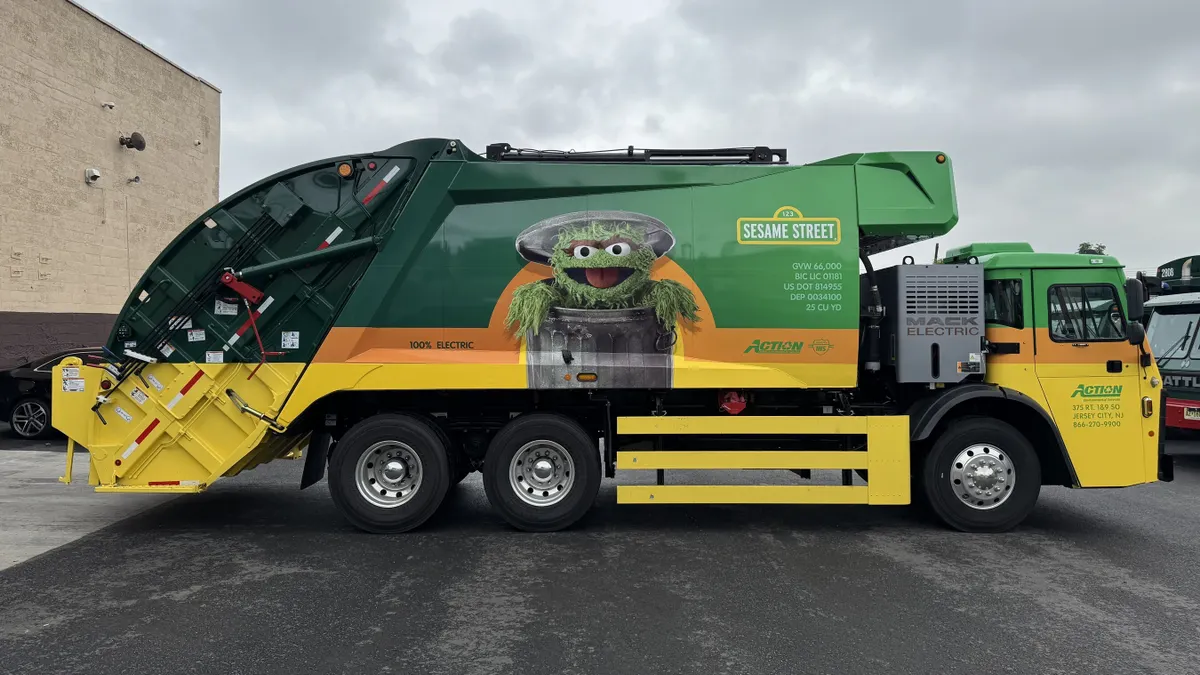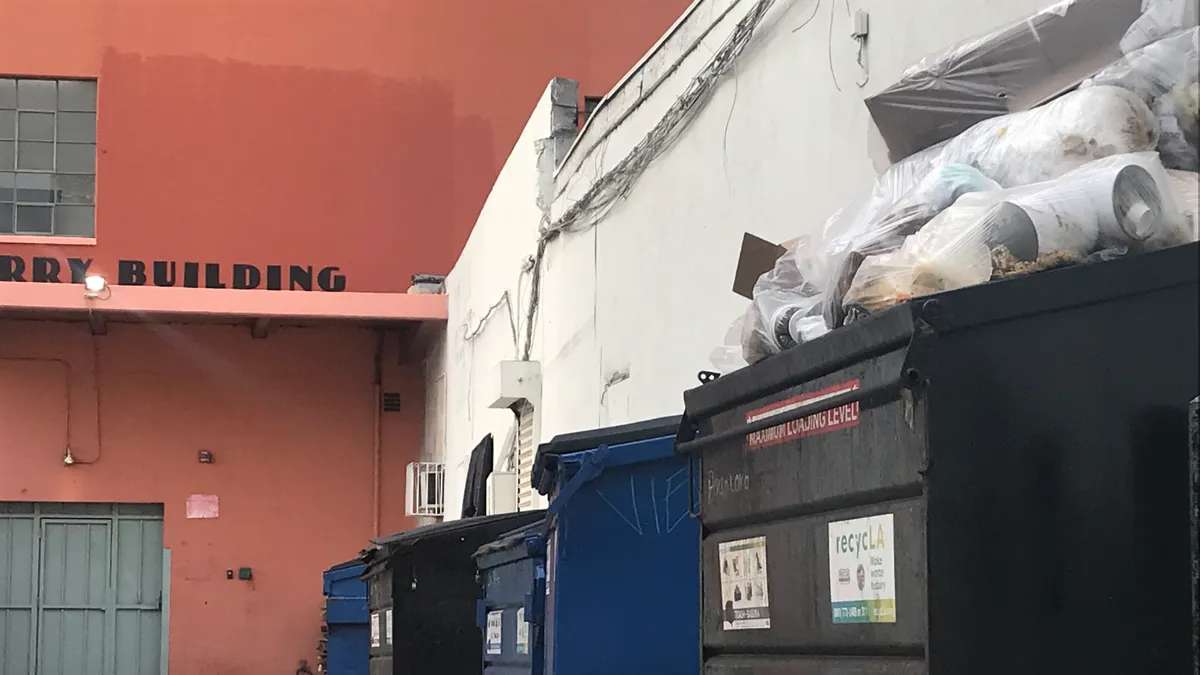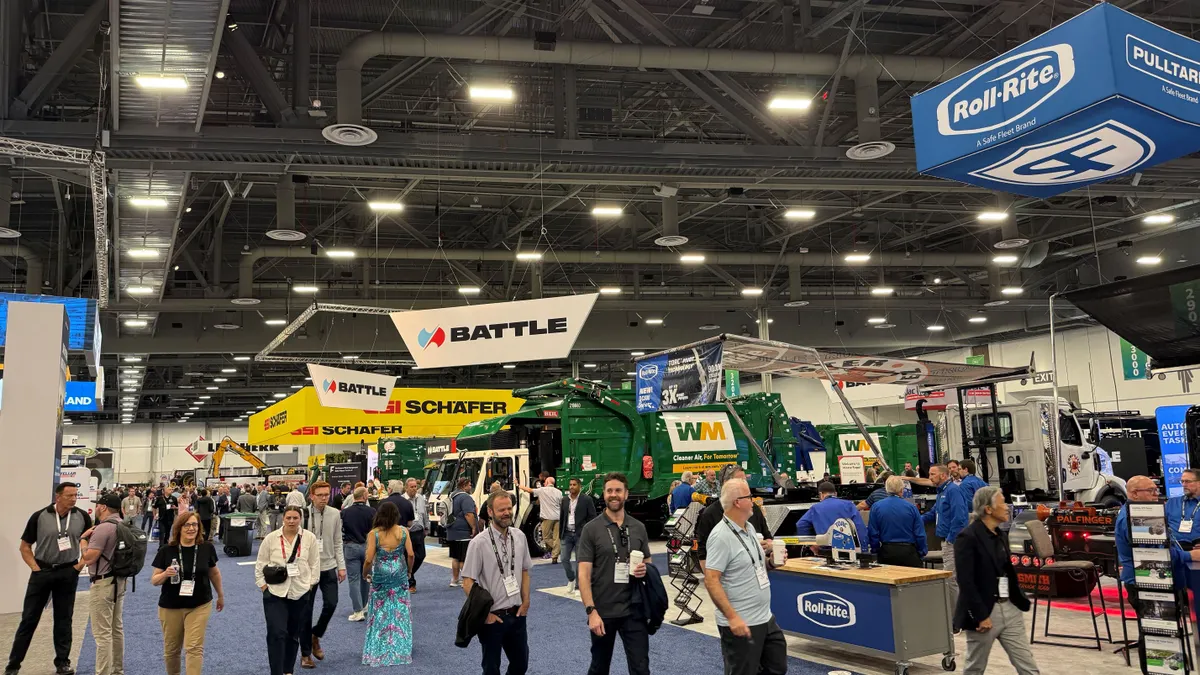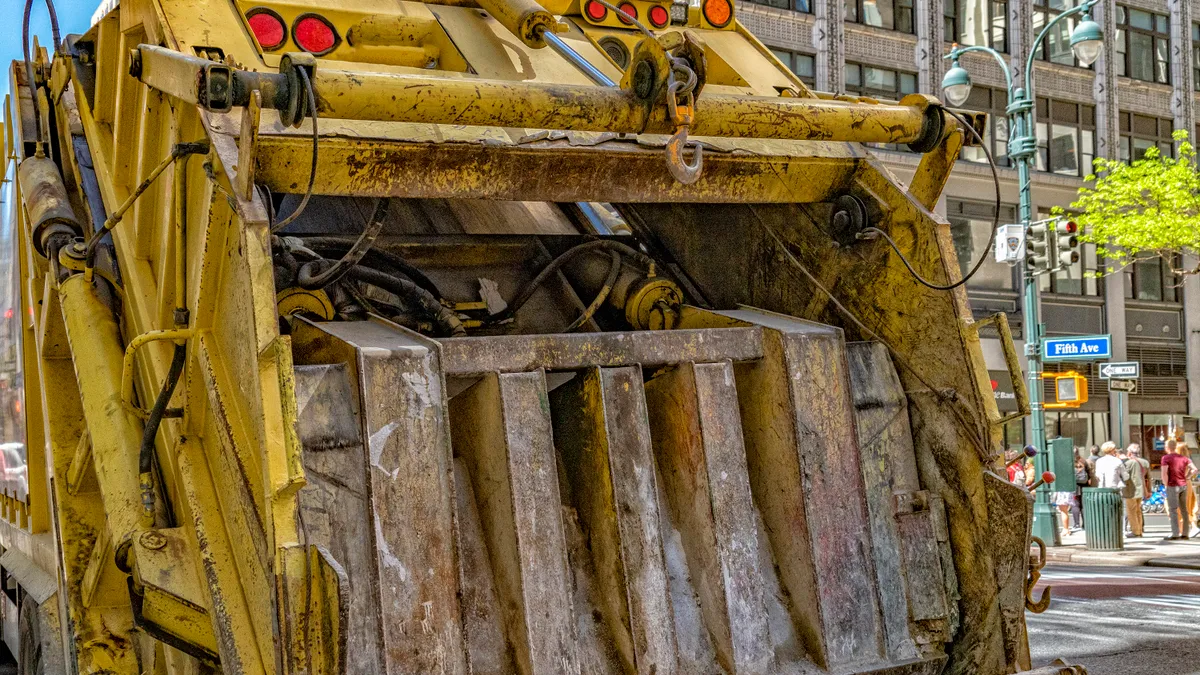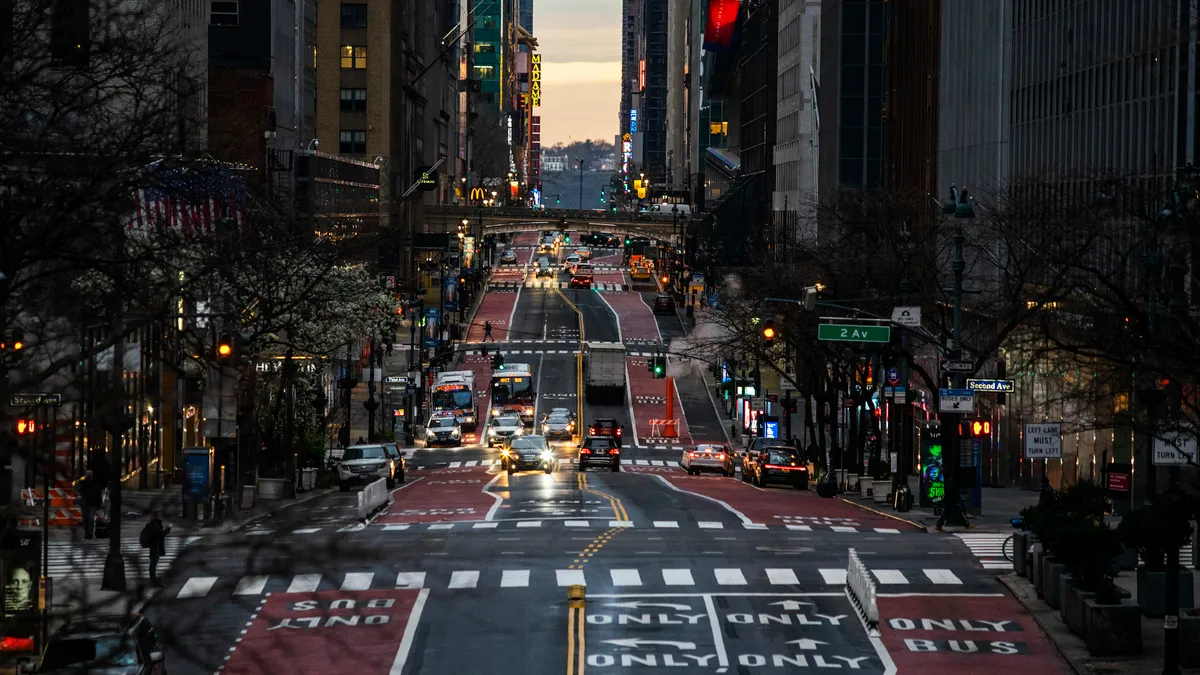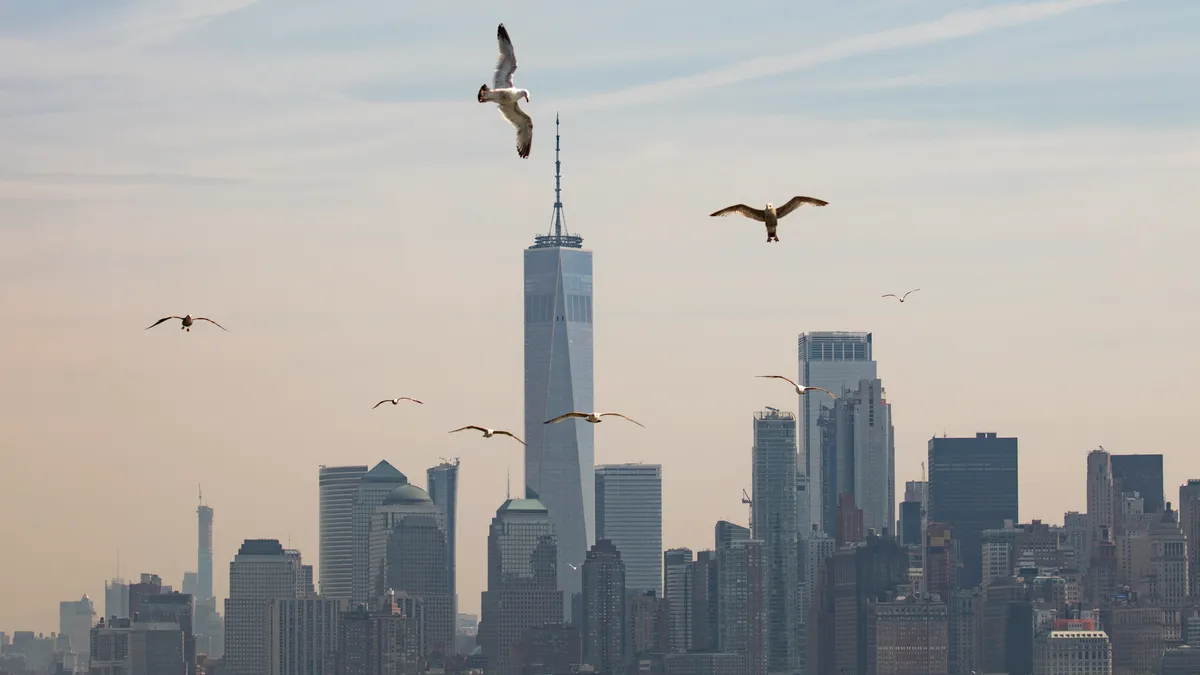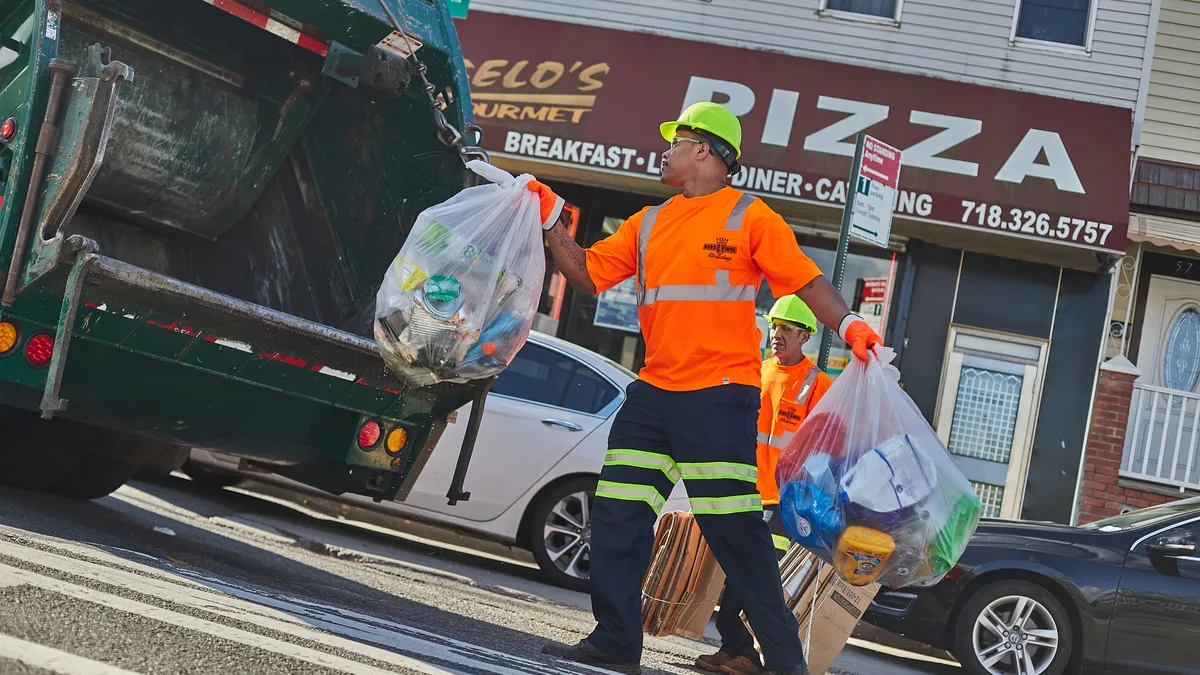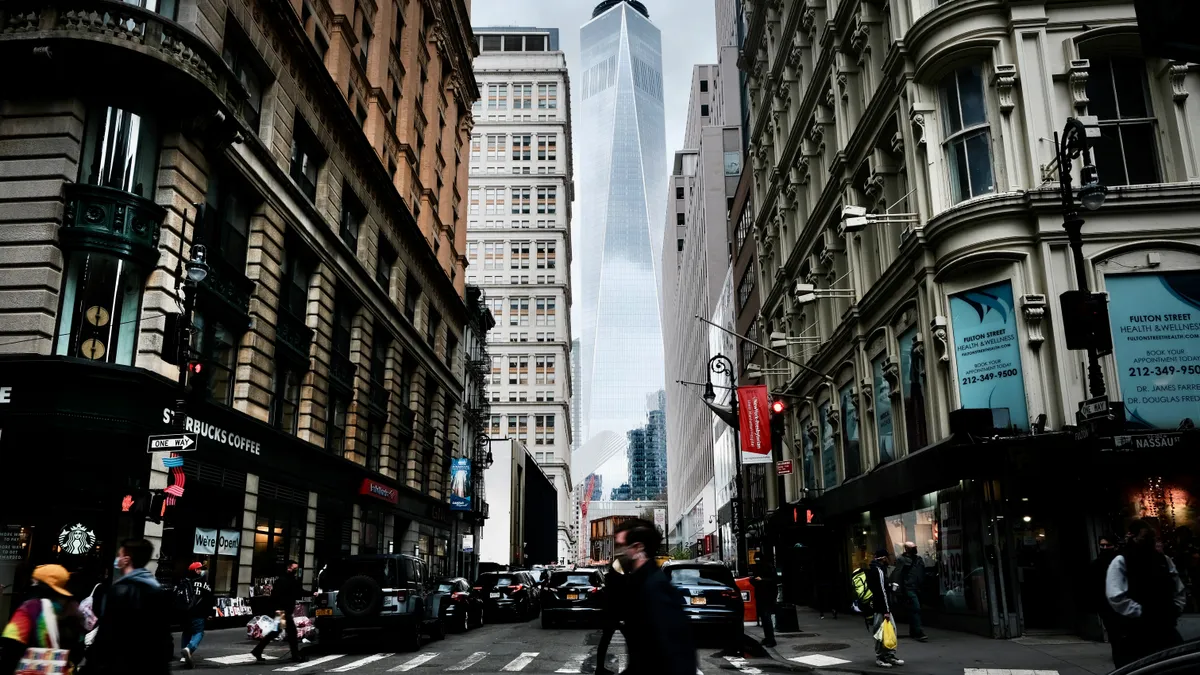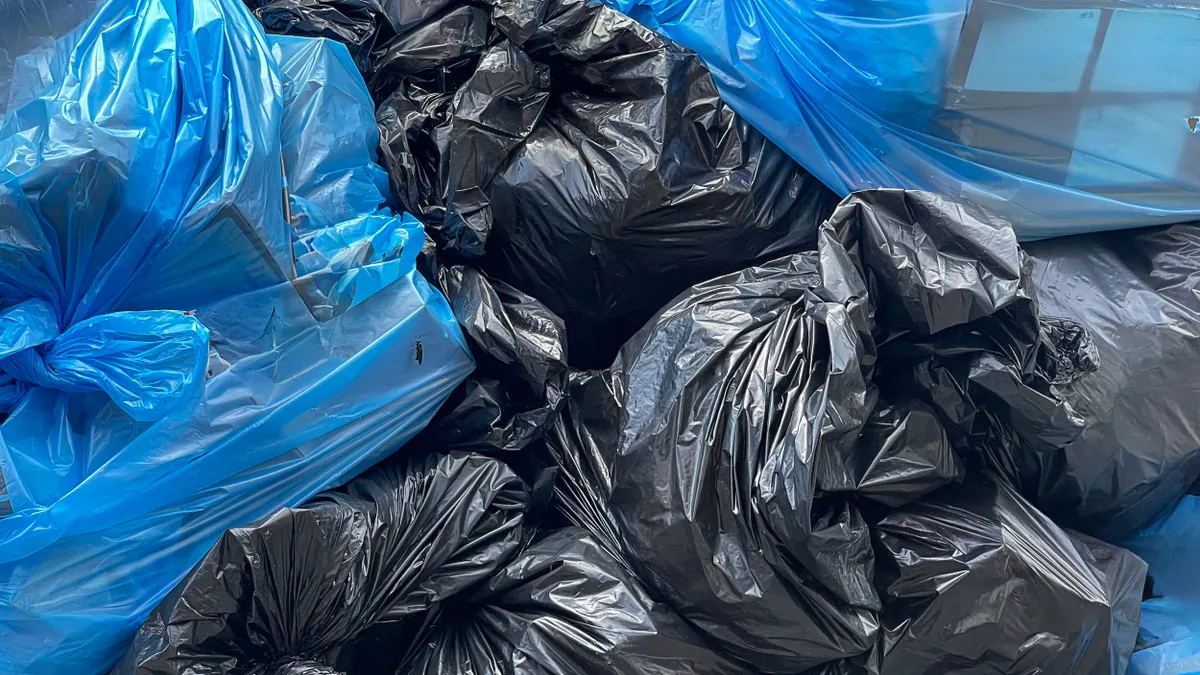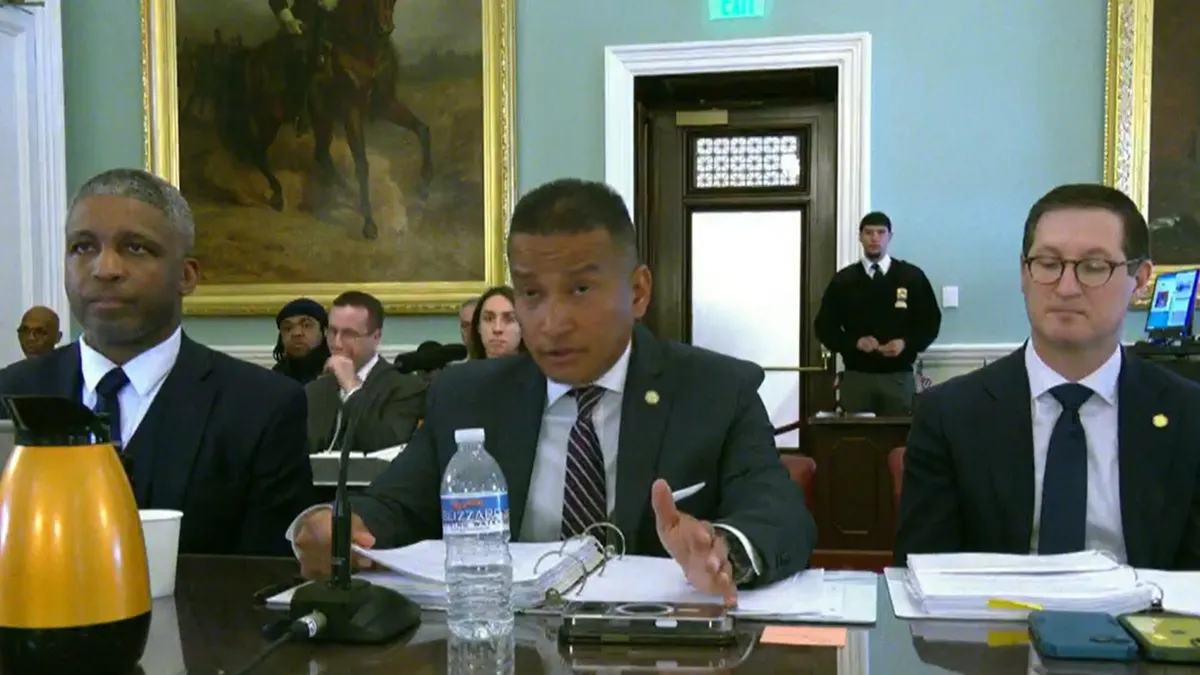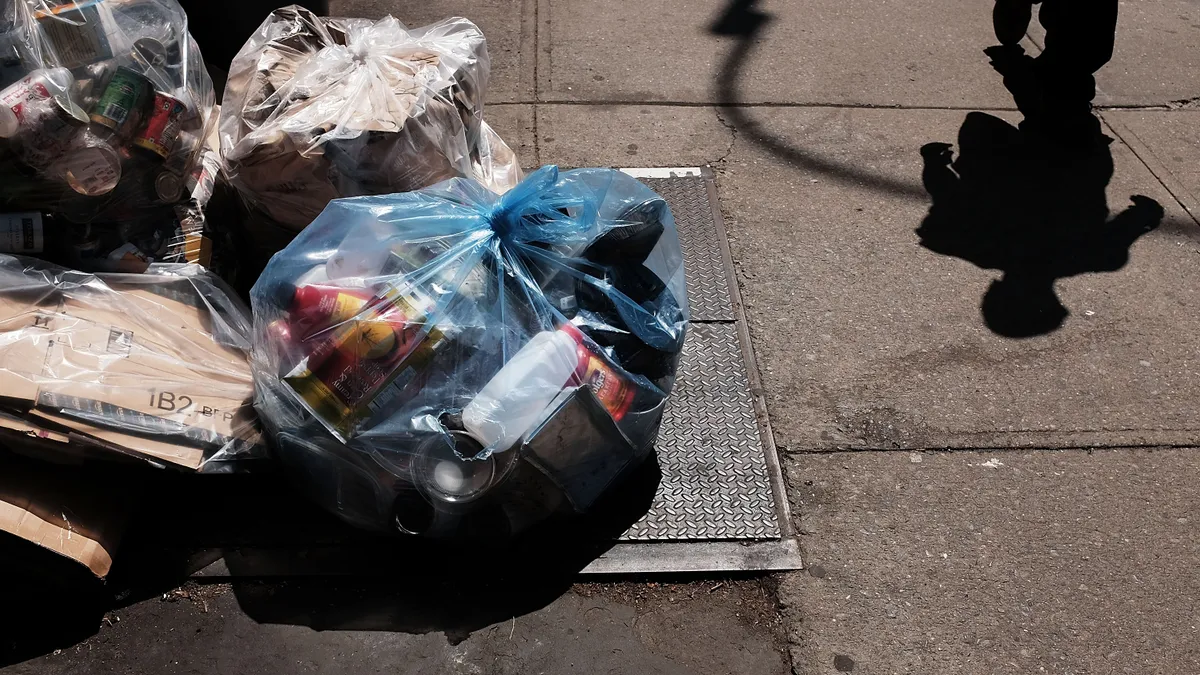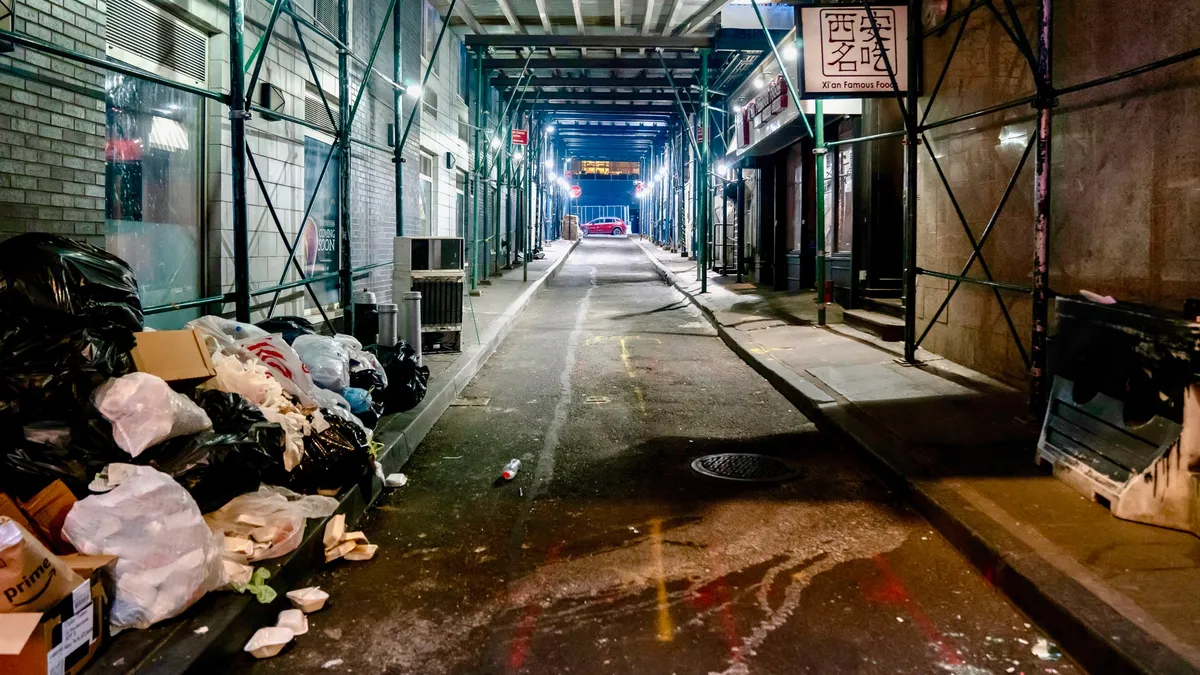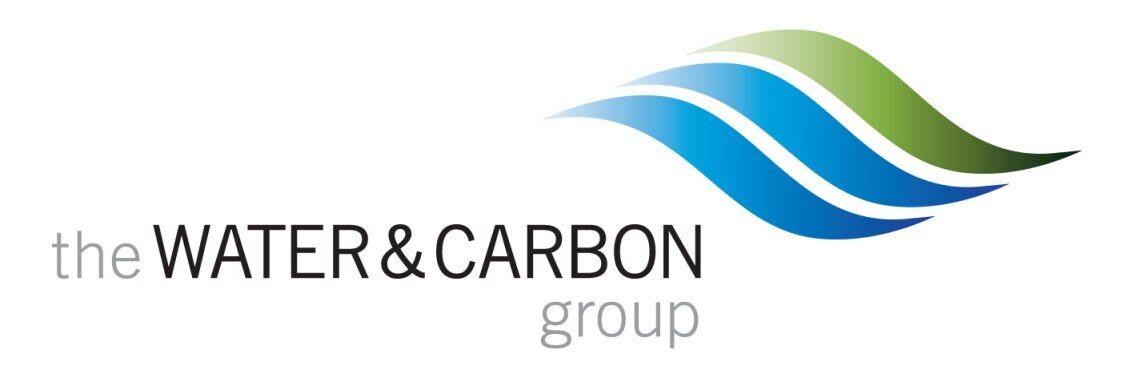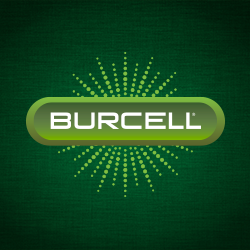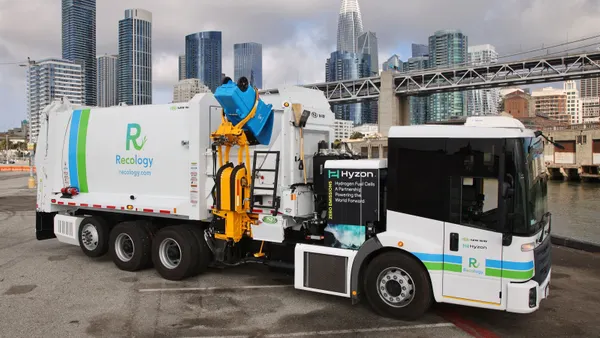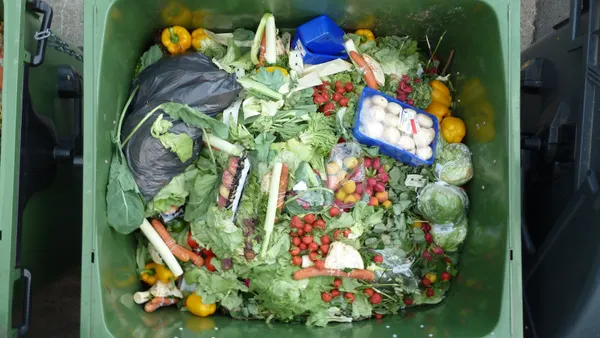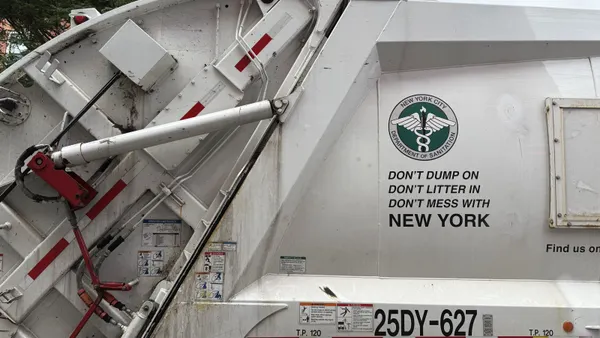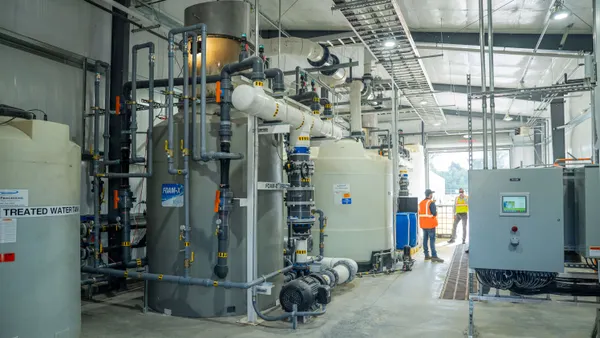Dive Brief:
- New York City’s commercial waste zone system further expanded this month with the launch of two zones — Bronx East and Bronx West. All contracted carters, including subsidiaries of Interstate Waste Services and Waste Connections, had received a notice to proceed as of Monday.
- The program’s initial zone, Queens Central, was fully implemented in January. A recent report from the city’s Department of Sanitation estimated that carters had earned nearly $16.5 million through June to manage 49,560 tons of material.
- Meanwhile, DSNY confirmed the award of two new contracts last week for other boroughs — Tully Waste Services in Queens West and 1 Take All in Brooklyn Southwest. This was prompted after Waste Connections’ 2024 acquisition of Royal Waste Services put it over a 15-zone contract cap in the program.
Dive Insight:
The reshaping of the nation’s biggest commercial waste market has been many years in the making, with a complex bidding process and pandemic delays. This month’s expansion is the latest step in the new system taking shape.
The commercial waste zone program was created by a 2019 law, leading to the establishment of 20 non-exclusive zones with three carters each as well as a set of citywide contracts for containerized service. DSNY awarded contracts in early 2024 and has pledged to have all zones implemented by the end of 2027.
This month’s launch means the entire Bronx is now covered by the CWZ program. Full implementation must be done in both zones by Nov. 30.
Action Environmental, a subsidiary of IWS, and Royal Waste Services, a subsidiary of Waste Connections, have contracts in both zones. Recycle Track Systems and 5 Borough Waste Removal also each have one contract.
DSNY estimates the two zones collectively have 15,984 customers, based on data from the city’s Business Integrity Commission. This is up from an initial estimate of 11,319, following customer outreach. The number of customers in Queens Central also grew from an original estimate of 5,629 to a current total of 8,999 active accounts.
Carters have been working for months to educate customers about the new system and prepare their assets. For Action, this included investing in two new hauling facilities, expanding rail transfer infrastructure to export waste and opening a new MRF in New Jersey to handle volumes. The company is also considering upgrades at its existing Bronx MRF.
"We are very excited, we feel like we've been talking about getting started forever,” said Josh Haraf, IWS’ vice president of the New York City market. "We've made significant investments in people, in infrastructure, in equipment, in systems.”
Haraf said the company has been engaging with customers for months, including an active push during the last six. This included having all customers sign new contracts, making them aware of recycling and organics options and more. Action also worked with the Bronx Chamber of Commerce to help raise awareness for prospective customers and partnered with Sesame Workshop on a campaign to promote its electric collection truck.
RTS also conducted a similar contract and education push, in partnership with its designated subcontractor City Waste.
"We focused on the cultural diversity of the Bronx, including having employees that could handle Spanish-speaking, Arabic-speaking and Chinese-speaking customers. And we'll continue to do that as these zones roll out throughout New York City,” said CEO Greg Lettieri. "It is currently, and was, a large educational endeavor.”
The CWZ program excludes medical waste, but the Bronx rollout has still prompted concern from members of the Greater New York Hospital Association that will have to comply with the program for their non-medical waste. They, along with medical waste company Approved Storage and Waste Hauling, backed local legislation that would exempt regulated medical waste generators from participating in the program at all as of 2034. This could also include pharmacies, veterinary offices and other locations.
During a Sept. 18 city council committee hearing, the bill drew a rare unified front of opposition from DSNY, the National Waste & Recycling Association, IWS, environmental groups, labor unions and others. It was also received skeptically by the committee’s chair, Council Member Shaun Abreau.
David Biderman, a safety consultant who works with local companies, testified in opposition and said if all these groups opposed the bill then “there's probably reason enough to evaluate it critically." According to Biderman, "based on my conversations with various stakeholders it's clear this legislation isn't going anywhere.”
Justin Wood, director of policy at New York Lawyers for the Public Interest, said hospitals have a large share of non-medical waste that could and should be diverted. He pointed to an estimated 26% diversion rate for recyclables and organics in Queens Central as a sign that more can be done in the CWZ program generally.
"The city is making history by being able to collect data on the millions of truck miles and millions of tons of waste generated in the commercial sector for the first time,” said Wood, saying of the recycling data that “it's troubling but it also just means there's a lot of room for improvement with the new system."
The Transform Don’t Trash Coalition, which includes NYLPI and others, recently reiterated a request to transition the remaining 17 zones faster. This recommendation was also raised in a report by the city comptroller’s office.
DSNY previously announced it would launch service in Queens Northeast and Brooklyn South on Jan. 1. The agency also formally announced on Wednesday that it will launch Queens West and Lower Manhattan on April 1.



